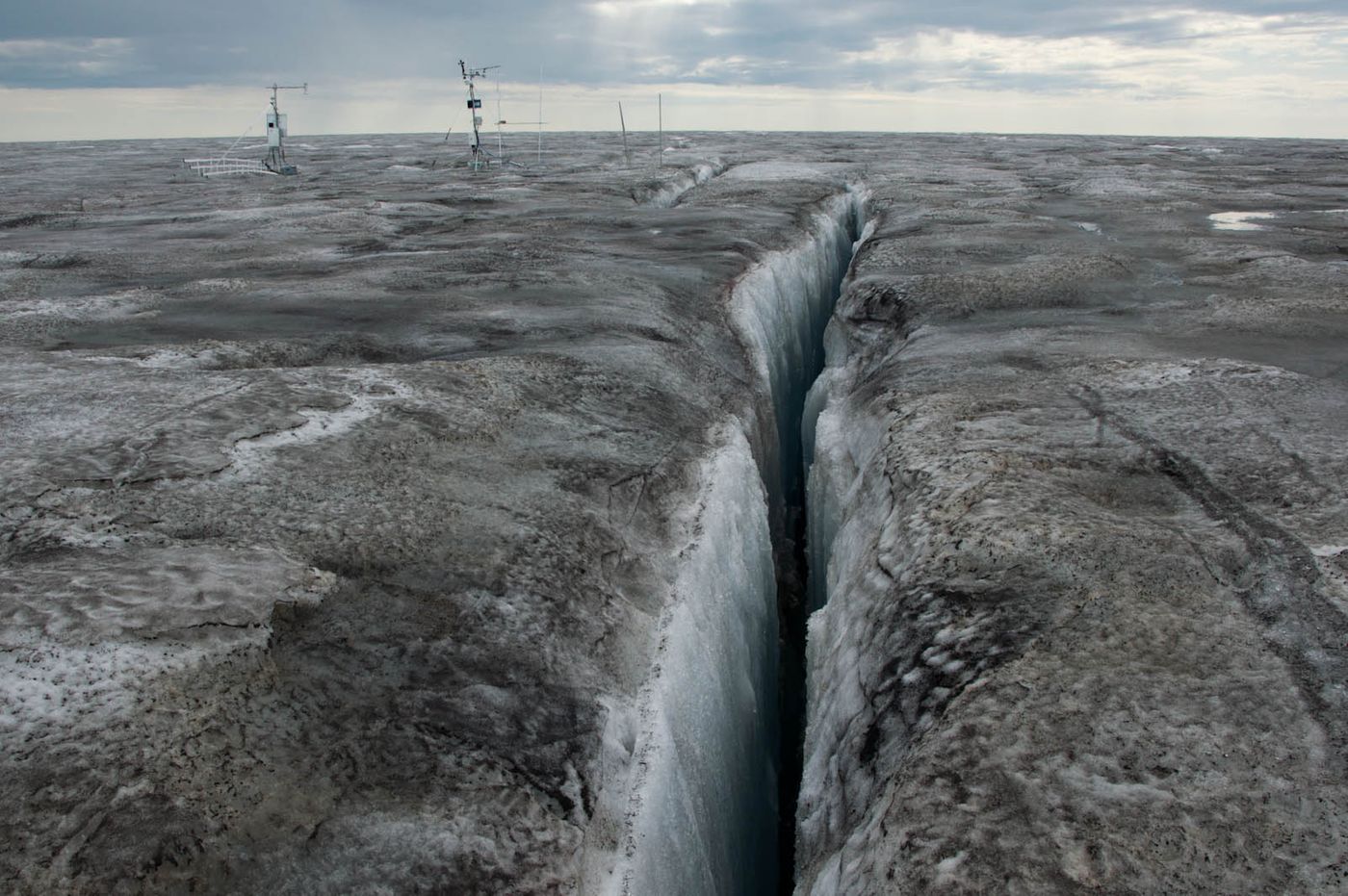More algae = more melting for Greenland's ice sheet
You probably know that darker colors absorb more heat. Ever walked barefoot on a blacktop in the summer sun? Ouch! Well this phenomenon is proving to be a problem for Greenland’s ice sheet, where algae that produce dark pigment is causing melting of the already vulnerable ice mass. A new study published in Geophysical Research Letters that looked at the impurities in the ice found a reduced albedo, or reflectivity of ice, on the ice sheet caused by the algae. This impact was even greater than that caused by abiotic factors such as dust or black carbon. The scientists with the study believe this research could help us to better understand what lays ahead for us with sea level rise.
The team went to the southwestern region of the ice sheet for 56 days in the summer of 2014 to gather data on the sheet's reflectivity and algal population. To do so, they used portable spectrometers and albedometers and also collected samples of surface ice, using a field microscope classify the algae and count the number of algal cells in each sample. Following Science Daily, they later analyzed the relationship between the growth of the algae and the amount of light being reflected by the ice sheet surface.
Algal cells grow naturally on the ice sheet and it’s for that exact reason that no study had previously contemplated their impact on the glacial structures. Yet these algae produce dark pigments to protect themselves from high-intensity radiation, so their influence on the ice sheet’s albedo is significant. In our current conditions, especially, it’s imperative that we look at the ecosystem as a whole, say the authors.
"As the climate warms, the area that the algae can grow in will expand, so they'll colonize more of the ice sheet," said Marek Stibal, one of the lead authors of the new study. "Additionally, the growing season will lengthen, so the contribution of algae to the melting of the ice will probably increase over time."
According to the study’s other lead author, Jason Box, most of the ice melt in Greenland is a result of sunlight absorption. From their research, the team found that algal darkening is responsible for 5-10% of the total ice sheet melt each summer.
Although the new study didn't go so far as to estimate how much more ice could melt in the future because of the algae, the research they did will hopefully lead to further studies that can help us to better project sea level rise. After all, Greenland’s ice sheet is not the only place where this phenomenon is taking place. And other scientists are already taking notice.
"The major implication of their findings is that the ice sheet is not a simple abiotic system of snow and ice, but rather an ecosystem," said Nozomu Takeuchi, professor of earth sciences at Chiba University in Japan. "Understanding this biological process more quantitatively could induce a new perspective on other climate cycles of the Earth, such as glacial-interglacial cycles."









